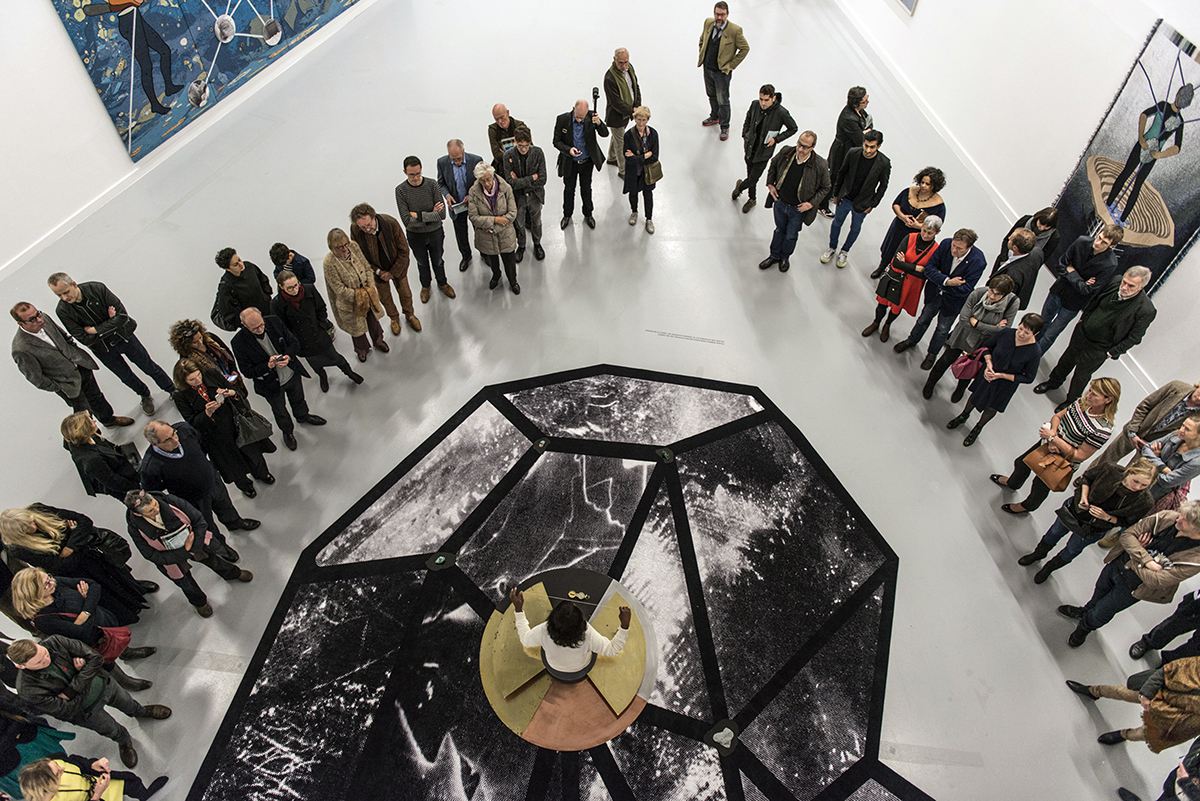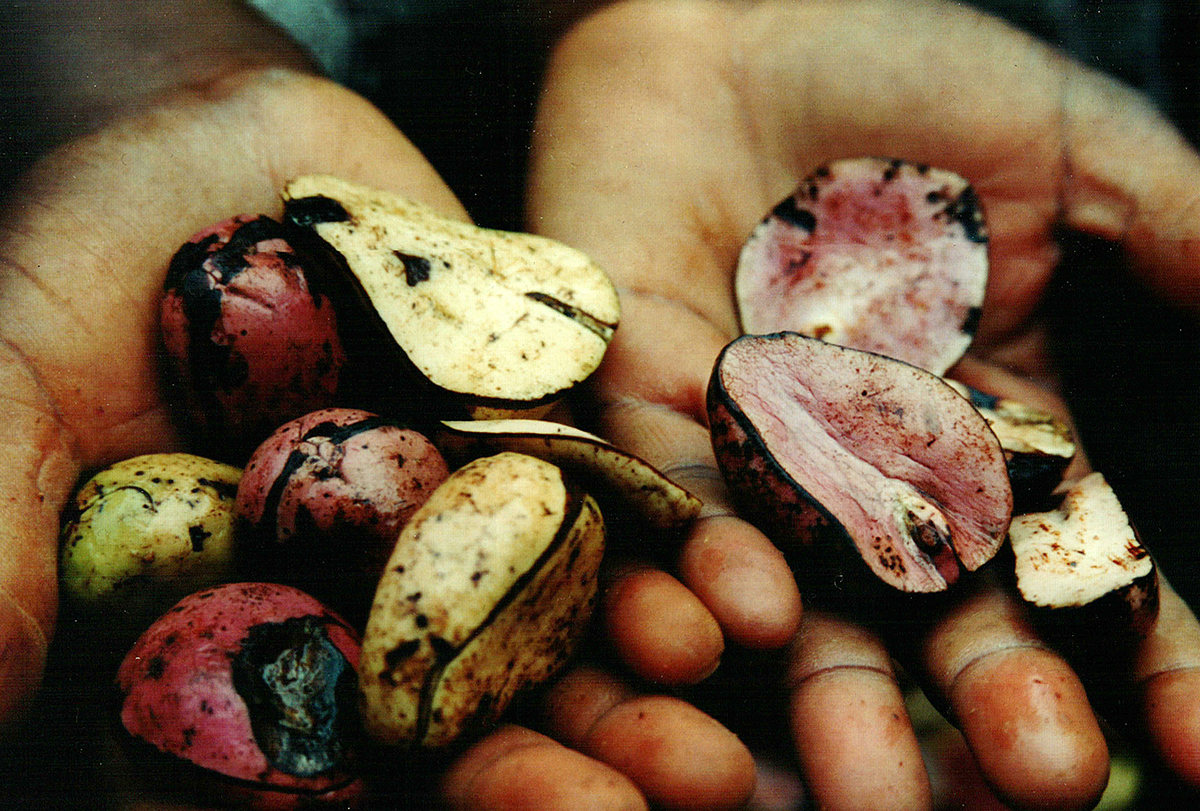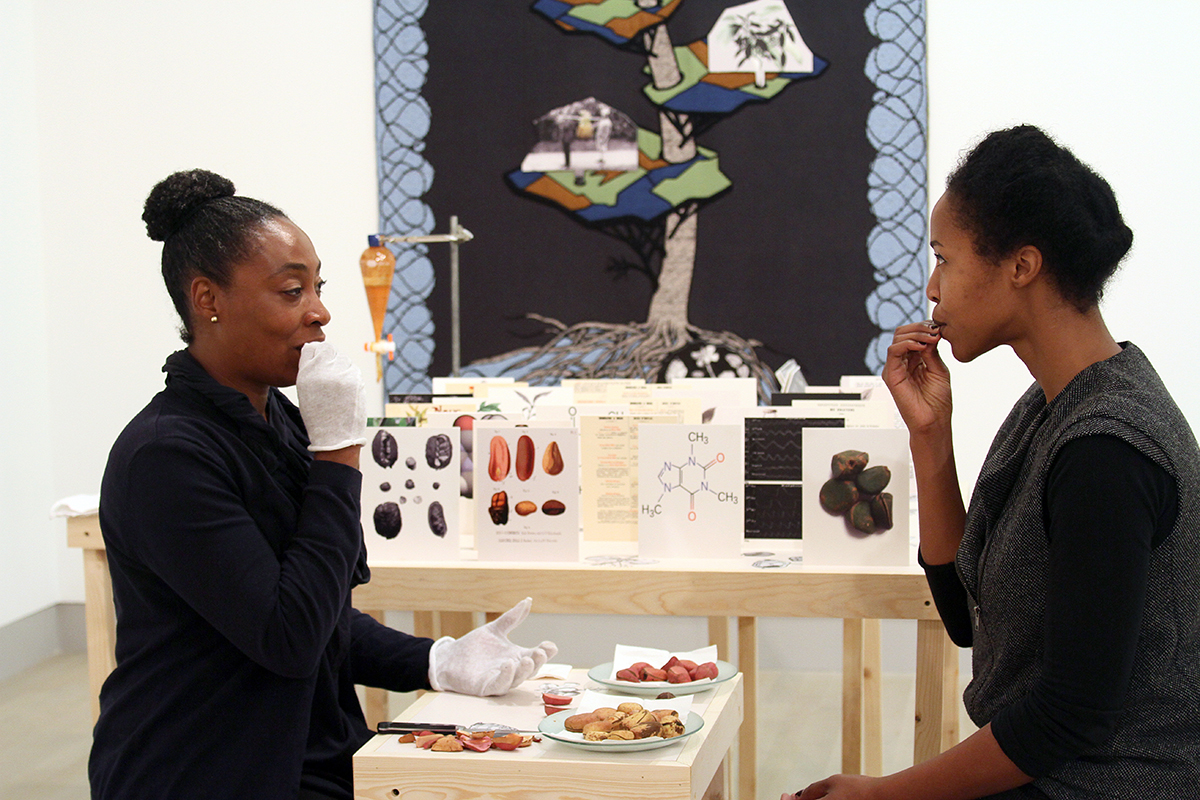Otobong Nkanga is driven by what appears to be an insatiable curiosity about the world around her. Born in Kano, Nigeria and based in Antwerp, Belgium, her biography touches on every continent but Antarctica, and that’s probably just a matter of time. In her travels for study, performance and as part of the international biennial circuit, Nkanga seeks out connections between disparate places in the movement of raw materials — plants, minerals, people — across both time and space.
“I don’t look at another space as an alien,” she said last week in an interview at the Berkeley Art Museum and Pacific Film Archive (BAMPFA). “I look at it as a space I want to connect with it.” This yearning for connection feeds Nkanga’s complex and sensory-rich performances, which incorporate movement, storytelling, conversation and improvisation. BAMPFA hosts two of her pieces as part of MATRIX 260, the museum’s 40-year-old series of solo projects by contemporary artists.
On Wednesday, May 11 at BAMPFA, Nkanga and a group of five Bay Area art students perform From Where I Stand (2015), a piece conducted on a large-scale carpet modeled after electron-microscope images of the mineral mica. And on Saturday, May 14, she holds court alone in the tropical house of the UC Botanical Garden at Berkeley to perform Contained Measures of a Kolanut (2012), a conversation and tasting of the kolanut, a fruit that figures prominently in the customs and culture of West Africa.

You’re presenting two pieces that have both been performed before. How will these MATRIX performances be different?
From Where I Stand, starts with a platform which was made in 2015 at M HKA in Antwerp. But the idea of the platform — it’s a carpet — is that there could be all kinds of performances on it.
In this version, I’ll be working with five students from the San Francisco Art Institute and UC Berkeley. And that’s new. I met them yesterday, so it’s a very short time to put something together. But I think it’s kind of exciting also to open this possibility to being here in a university and meeting different artists, different students.
In relation to Contained Measures of a Kolanut, the form stays the same, but the conversations and the content have expanded over time. It’s really about dissecting the plant and looking at it in all kinds of different ways. It’s really a moment to share. And the kolanut is there to open that conversation.
Is there a kolanut tree in the UC Berkeley botanical gardens?
They had a kolanut tree, but it died. They were quite sad about that. It’s very difficult to maintain. It’s not a very easy plant.

How did you decide to stage Contained Measures of the Kolanut in the botanical gardens’ tropical house?
I think it was in the conversation I was having with [curator] Apsara DiQuinzio. We were thinking if we have one piece in the museum, maybe it could be nice to have the other one in another venue.
It’s nice for it to be in the tropical garden, because it’s the right temperature. In general, whenever I enter botanical gardens and I go to the tropical section, I feel like, ‘Oh yeah, this is the right temperature, the right humidity.’ I feel comfortable in those spaces. But I’m not sure how comfortable the visitor will be.
What kind of conversations have you had about the kolanut in the process of performing this piece?
I did the first performance at Bétonsalon in Paris and the second performance was at the Logan Center in Chicago. In Paris there were people from Cameroon or Mali who either talked about their grandfather or told certain stories from their childhood. And there were also people who didn’t actually know about the kolanut, but were curious to know more about it.
Normally a woman is not allowed to share the kolanut if we look at it from the traditional or the spiritual sense; you have to be a priestess to do that. But since it’s in an artistic context, I don’t really consider those aspects. I’m looking at its displacement as a nut from West Africa entering into the Americas, looking at it as a product of colonial times. I’m looking at the way it’s used in ceremonies, in sealing contracts and how it’s entered into all kinds of social lives.

You often touch on how the displacement of resources or raw materials is echoed in the displacement of people. We tend to classify nature as if it’s separate from humanity; we talk about our effect on it but not our oneness with it. How do you view the body as inextricable from place and landscape?
When we were kids in Nigeria we had these Queen of the Night plants, mango trees and papaya trees. You kind of start believing that is part of your culture, a part of who you are. When you start looking more closely, you start understanding how people have shifted. And these plants are just evidence of the shift. So for me, that kind of displacement you cannot dissociate from the body.
It’s really the synchronicity between nature, wind, plants, birds taking seeds and how they resist certain landscapes or implant themselves, become invasive, or transform to survive. It’s more or less the same with the body, the way we deal with things.
Every performance of From Where I Stand takes place on a carpet that shows a hugely magnified view of mica, a mineral mined historically in Africa and South America. While the movement of raw materials like mica in uses around the world, you also look to origin of that dispersion and displacement — the mine. I understand a lot of this work was inspired by a visit to a mining site?
I went to Namibia in 2015 to visit the Green Hill [a former minerals mine in Tsumeb] which is now a big, deep hole. I was looking at places where things are taken out of the ground, where things are constantly shifted and broken. When we make a product, we don’t even understand it anymore, it could be [made of materials] from different mountains.
How much of your own personal history of traveling and experiencing different parts of the world influences your work?
I think what triggers me from the autobiographical are things that I’ve encountered in childhood which marked me. It might just be a taste of something, the smell of something, a certain color, a mineral, or things I played with as a kid. And then I might go somewhere else and all of a sudden I smell that thing or I encounter that object and I go, ‘Whoa, that was something that I thought only belonged to my space and my childhood. What is it doing here?’
When we talk about people coming into another land, people moving into another place, what makes it possible for someone to feel connected to that space or not? There are certain things linked with memory that all of a sudden lock together and make a place become bearable. I’m interested in where it’s bearable; where it’s possible to question. That’s where that possibility of a work starts taking place.
Otobong Nkanga performs From Where I Stand at the BAMPFA in Berkeley tonight (May 11) at 7:30pm. She performs Contained Measures of a Kolanut 1-5pm on Saturday, May 14 at the Tropical House in the UC Berkeley Botanical Gardens. For tickets and information visit bampfa.org.